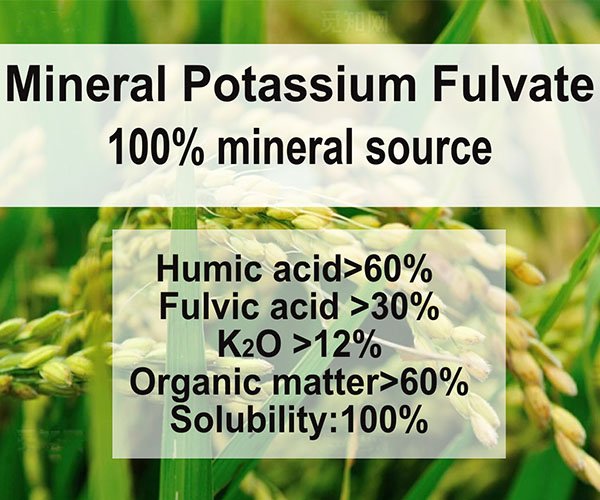Mineral source potassium fulvate is a small molecule organic mixture derived from lignite through oxidation and other chemical modifications. This process mainly involves oxidation, which disrupts the unstable structures like unsaturated fatty chains, double bonds, and triple bonds in the molecules. This increases the content of oxygen-containing functional groups and hydrophilic groups. Elemental analysis shows a significant change in the carbon-to-oxygen ratio after oxidation, with the oxygen content typically leading to fulvic acid levels not exceeding 60%. This specific ratio varies based on the characteristics of lignite, oxidation processes, and metal ion content in different regions.
Compared to traditional humic acid, mineral source potassium fulvate exhibits a stronger chelating ability due to its diverse functional groups. After modification, it can form soluble chelates with divalent metal ions, making it effectively absorbable by plants.
Why is Fulvic Acid More Effective Than Humic Acid?
Both fulvic and humic acids primarily derive their benefits from active functional groups. Studies show that the more active functional groups present in fulvic acid, the greater its effectiveness—not simply reliant on acid content. Therefore, mineral source potassium fulvate demonstrates superior results in soil improvement.
Multiple Functions of Mineral Source Potassium Fulvate
1. Improving Soil Structure
Potassium fulvate significantly impacts soil by improving its aggregate structure. Its rich functional groups interact with soil particles to form stable aggregates of varying sizes. When applied, it enhances surface activity, allowing for better nutrient adsorption and conversion of fixed nutrients into forms that crops can absorb, thus increasing nutrient utilization.
2. Promoting Microbial Activity
The soil improved with mineral source potassium fulvate fosters increased microbial activity and higher biological vitality, ensuring a sufficient nutrient supply. This environment not only enhances nutrient retention and supply but also boosts soil fertility. As soil microbes proliferate, they convert and release fixed nutrients for plant absorption.
3. Remediating Heavy Metal Pollution
Potassium fulvate effectively chelates heavy metals, particularly converting toxic hexavalent chromium into less harmful trivalent chromium. This process facilitates soil passivation and remediation, allowing treated soils to be used for planting within the same year. Appropriate application not only prevents crop harm but can also increase yields and promote ecological farming.
4. Regulating Soil pH
This fulvate exhibits a dual regulatory effect on soil pH: it acidifies acidic soils and alkalizes alkaline soils, creating an optimal growth environment for crops. Additionally, it can alleviate soil compaction, enhancing overall soil structure.
5. Anti-inflammatory and Antibacterial Effects
The molecules in fulvic acid possess oxidation and reduction functional groups that can undergo self-redox reactions. This process generates bactericidal intermediates that help protect and repair plants and animals by eliminating harmful bacteria, thus promoting healthy growth.
Mineral source potassium fulvate stands out as an essential choice for soil improvement in modern agriculture. It enhances soil fertility, promotes microbial activity, remediates pollution, regulates pH, and provides anti-inflammatory and antibacterial benefits. By effectively utilizing mineral source potassium fulvate, crops can grow healthier and more ecologically, supporting the achievement of sustainable development goals.


